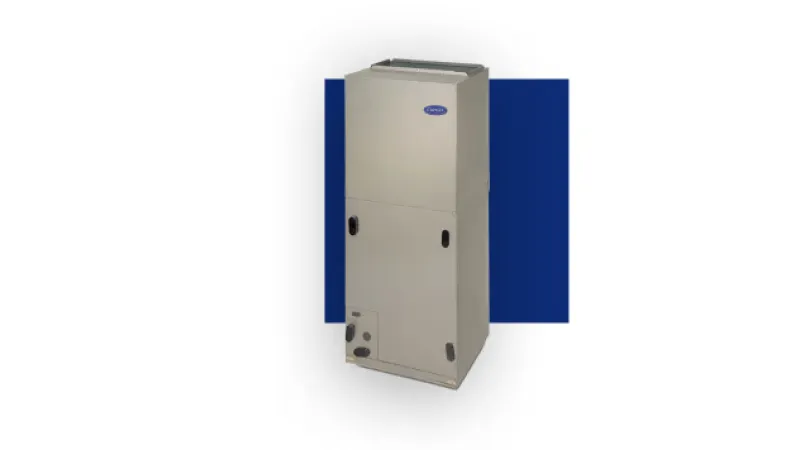How can we help you Today?
Basics of
Air Handlers
An air handler, also known as an air handling unit (AHU), is a critical component of a residential HVAC system. Its primary function is to condition and circulate air throughout the home. It does this by taking in air from the outside or return air from the living space, passing it through various components to heat, cool, or dehumidify the air as needed, and then distributing the conditioned air back into the home through ductwork or other means.
The air handler works in conjunction with other HVAC system components, such as the condensing unit, furnace, or heat pump, to maintain a comfortable indoor environment.

Types of
Air Handlers
There are several types of air handlers available for residential HVAC systems, each with different features and capabilities. Some common types include:
- Single-speed air handlers: These are the most basic air handlers and operate at a single, constant speed. They turn on and off as needed to maintain the desired temperature, offering a simple and cost-effective solution. However, they can be less energy-efficient and may provide uneven temperature control compared to more advanced options.
- Multi-speed air handlers: These units offer multiple fan speed settings, providing more precise temperature control and improved energy efficiency. By adjusting the fan speed according to the heating or cooling demand, multi-speed air handlers can help maintain a more consistent indoor temperature and reduce energy consumption.
- Variable-speed air handlers: These units have motors that can adjust their speed continuously. This provides the highest level of precision and energy efficiency when it comes to temperature control. Variable-speed air handlers can adapt to changing conditions, resulting in more consistent comfort, lower energy bills, and reduced noise levels.
- Mini-split air handlers: Also known as ductless air handlers, these units are designed for homes without existing ductwork or for those looking to add supplemental heating or cooling to specific rooms. Mini-split systems consist of an outdoor condensing unit and one or more indoor air handlers that can be controlled independently. They offer energy efficiency and zone-specific temperature control.
When selecting an air handler for a residential HVAC system, it's essential to consider factors such as the size and layout of the home, existing ductwork, energy efficiency requirements, and budget constraints. By understanding the different types of air handlers available and their features, homeowners can make an informed decision that best suits their needs.



